7,668cc OHV Inline 6-Cylinder Engine Single Carburetor 120bhp at 3500rpm 4-Speed Manual Transmission 4-Wheel Servo-assisted Drum Brakes *Exclusive and beautiful Henri Binder coachwork *Romantic period history, delivered new to The Copacabana Palace Hotel in Rio de Janeiro *Comprehensively restored in the late '80s, and remains in lovely condition *A unique amalgamation of British engineering and Parisian style THE ROLLS-ROYCE PHANTOM II Reputedly the last model that Henry Royce designed himself, the Phantom II was introduced in 1929 as a successor to the New Phantom (retrospectively Phantom I) with deliveries commencing in September of that year. Unlike its predecessor, which inherited its underpinnings from the preceding 40/50hp model, the Silver Ghost, the Phantom II employed an entirely new chassis laid out along the lines of that of the smaller 20hp Rolls-Royce. Built in two wheelbase lengths - 144" and 150" - this new low-slung frame, with its radiator set well back, enabled coachbuilders to body the car in the modern idiom, creating sleeker designs than the upright ones of the past. The six-cylinder overhead-valve engine too had come in for extensive revision. The PI's cylinder dimensions and basic layout - two blocks of three cylinders, with an aluminum cylinder head common to both blocks - were retained, but the combustion chambers had been redesigned and the 'head was now of the cross-flow type, with inlet and exhaust manifolds on opposite sides. The magneto/coil dual ignition system remained the same as on the PI. THE MOTORCAR OFFERED In the early 1920's, the President of Brazil suggested to his wealthy friend Octavio Guinle that Rio de Janeiro needed a world class beachfront hotel. Guinle took up the challenge and hired French architect Joseph Gire to design a fabulous new building. The Copacabana Palace, as it would become known, was built to be the very best and it soon became a destination for royalty, Hollywood stars, and the social and business elite of the world. In the late 1920s, his hotel a rousing success, the time came for Guinle to order a new automobile and he looked no further than Rolls-Royce's new flagship, the Phantom II. An aficionado of French design, Guinle turned to one of Paris' most exclusive coachbuilders, Henri Binder, to supply the bodywork. Binder was well established as a constructor of high-quality coach bodies, and successfully transitioned to automobile bodies at the turn of the century. Binder bodies were traditionally very stylish and exceptionally well-constructed, usually gracing big, powerful chassis from Minerva, Delage, Cadillac, and even one of the six majestic Bugatti Type 41 Royales. Guinle's Phantom II (wearing chassis number 103GY) was sold through Oscar A. Cox & Co. of London and was delivered to Binder on July 31st of the same year. After completion of the dramatic drophead coupe body, it was shipped to Rio where it remained in Guinle's possession until 1938. Subsequent owners included Mr. W.D. Radcliffe of Liverpool, B. Stinton Johnson of Stretton Hall, Cheshire from 1947-1950 and Neil Tuson of London. It then found its way to the United States where it was featured in several prominent collections including Bill Lassiter, The Blackhawk Collection, the Imperial Palace Collection and then finally with Dr. Donald Vestley who took the opportunity to restore this beautiful machine in 1986. Under the guidance of Mr. Vestley, 103GY underwent a comprehensive restoration. Coincidentally, Vestley had another PII, chassis number 162SK, in his possession. 162SK was a fully restored, bare chassis and one of the very late production cars that had benefited from the refinements made by Rolls Royce. 162SK was originally delivered wearing formal Sedanca deVille coachwork by Windovers but that body had long been separated with the chassis. It was decided that the restored body and engine of 103GY would be mated to the improved long-wheelbase 162SK chassis. Now, the magnificent Binder Cab
7,668cc OHV Inline 6-Cylinder Engine Single Carburetor 120bhp at 3500rpm 4-Speed Manual Transmission 4-Wheel Servo-assisted Drum Brakes *Exclusive and beautiful Henri Binder coachwork *Romantic period history, delivered new to The Copacabana Palace Hotel in Rio de Janeiro *Comprehensively restored in the late '80s, and remains in lovely condition *A unique amalgamation of British engineering and Parisian style THE ROLLS-ROYCE PHANTOM II Reputedly the last model that Henry Royce designed himself, the Phantom II was introduced in 1929 as a successor to the New Phantom (retrospectively Phantom I) with deliveries commencing in September of that year. Unlike its predecessor, which inherited its underpinnings from the preceding 40/50hp model, the Silver Ghost, the Phantom II employed an entirely new chassis laid out along the lines of that of the smaller 20hp Rolls-Royce. Built in two wheelbase lengths - 144" and 150" - this new low-slung frame, with its radiator set well back, enabled coachbuilders to body the car in the modern idiom, creating sleeker designs than the upright ones of the past. The six-cylinder overhead-valve engine too had come in for extensive revision. The PI's cylinder dimensions and basic layout - two blocks of three cylinders, with an aluminum cylinder head common to both blocks - were retained, but the combustion chambers had been redesigned and the 'head was now of the cross-flow type, with inlet and exhaust manifolds on opposite sides. The magneto/coil dual ignition system remained the same as on the PI. THE MOTORCAR OFFERED In the early 1920's, the President of Brazil suggested to his wealthy friend Octavio Guinle that Rio de Janeiro needed a world class beachfront hotel. Guinle took up the challenge and hired French architect Joseph Gire to design a fabulous new building. The Copacabana Palace, as it would become known, was built to be the very best and it soon became a destination for royalty, Hollywood stars, and the social and business elite of the world. In the late 1920s, his hotel a rousing success, the time came for Guinle to order a new automobile and he looked no further than Rolls-Royce's new flagship, the Phantom II. An aficionado of French design, Guinle turned to one of Paris' most exclusive coachbuilders, Henri Binder, to supply the bodywork. Binder was well established as a constructor of high-quality coach bodies, and successfully transitioned to automobile bodies at the turn of the century. Binder bodies were traditionally very stylish and exceptionally well-constructed, usually gracing big, powerful chassis from Minerva, Delage, Cadillac, and even one of the six majestic Bugatti Type 41 Royales. Guinle's Phantom II (wearing chassis number 103GY) was sold through Oscar A. Cox & Co. of London and was delivered to Binder on July 31st of the same year. After completion of the dramatic drophead coupe body, it was shipped to Rio where it remained in Guinle's possession until 1938. Subsequent owners included Mr. W.D. Radcliffe of Liverpool, B. Stinton Johnson of Stretton Hall, Cheshire from 1947-1950 and Neil Tuson of London. It then found its way to the United States where it was featured in several prominent collections including Bill Lassiter, The Blackhawk Collection, the Imperial Palace Collection and then finally with Dr. Donald Vestley who took the opportunity to restore this beautiful machine in 1986. Under the guidance of Mr. Vestley, 103GY underwent a comprehensive restoration. Coincidentally, Vestley had another PII, chassis number 162SK, in his possession. 162SK was a fully restored, bare chassis and one of the very late production cars that had benefited from the refinements made by Rolls Royce. 162SK was originally delivered wearing formal Sedanca deVille coachwork by Windovers but that body had long been separated with the chassis. It was decided that the restored body and engine of 103GY would be mated to the improved long-wheelbase 162SK chassis. Now, the magnificent Binder Cab
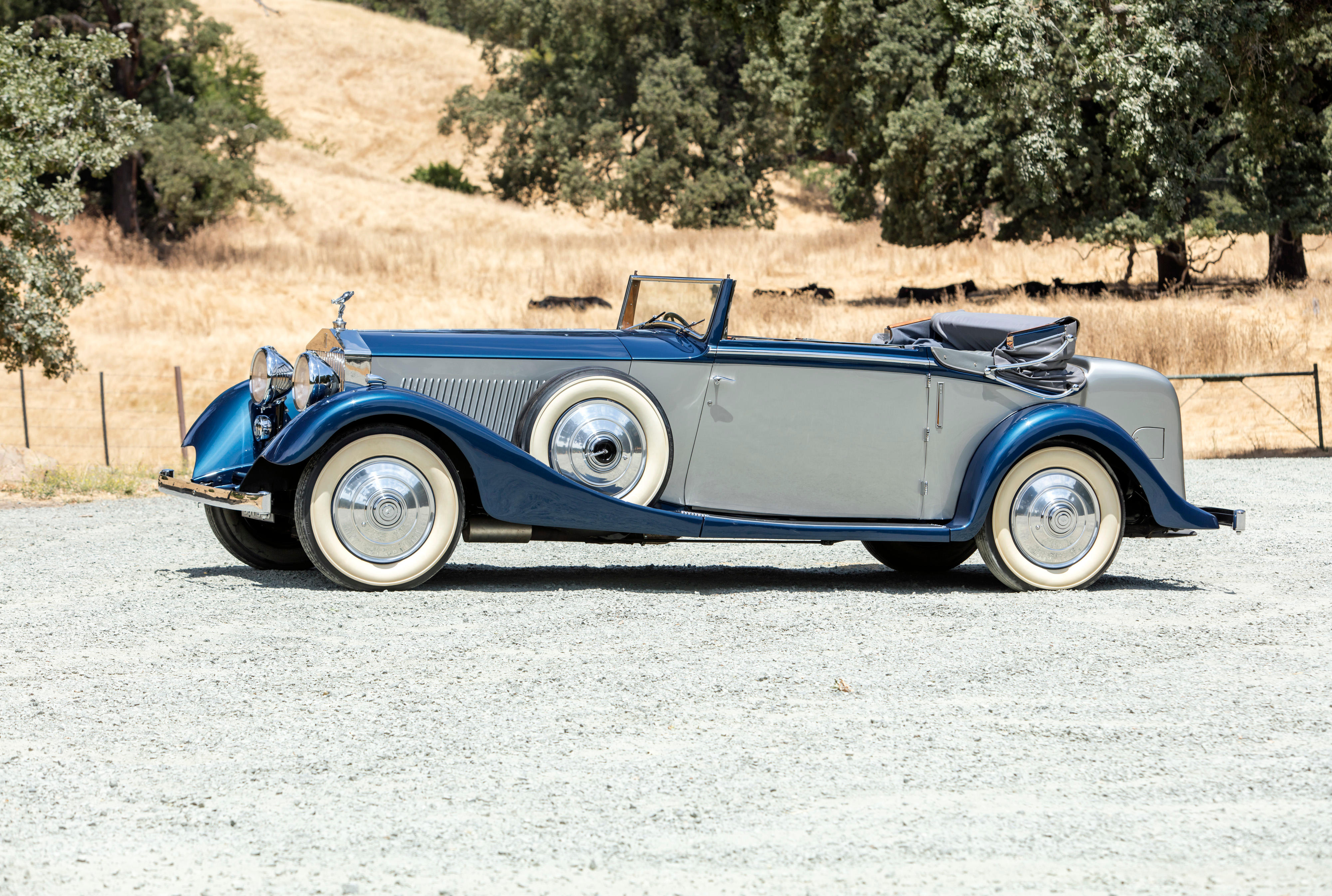



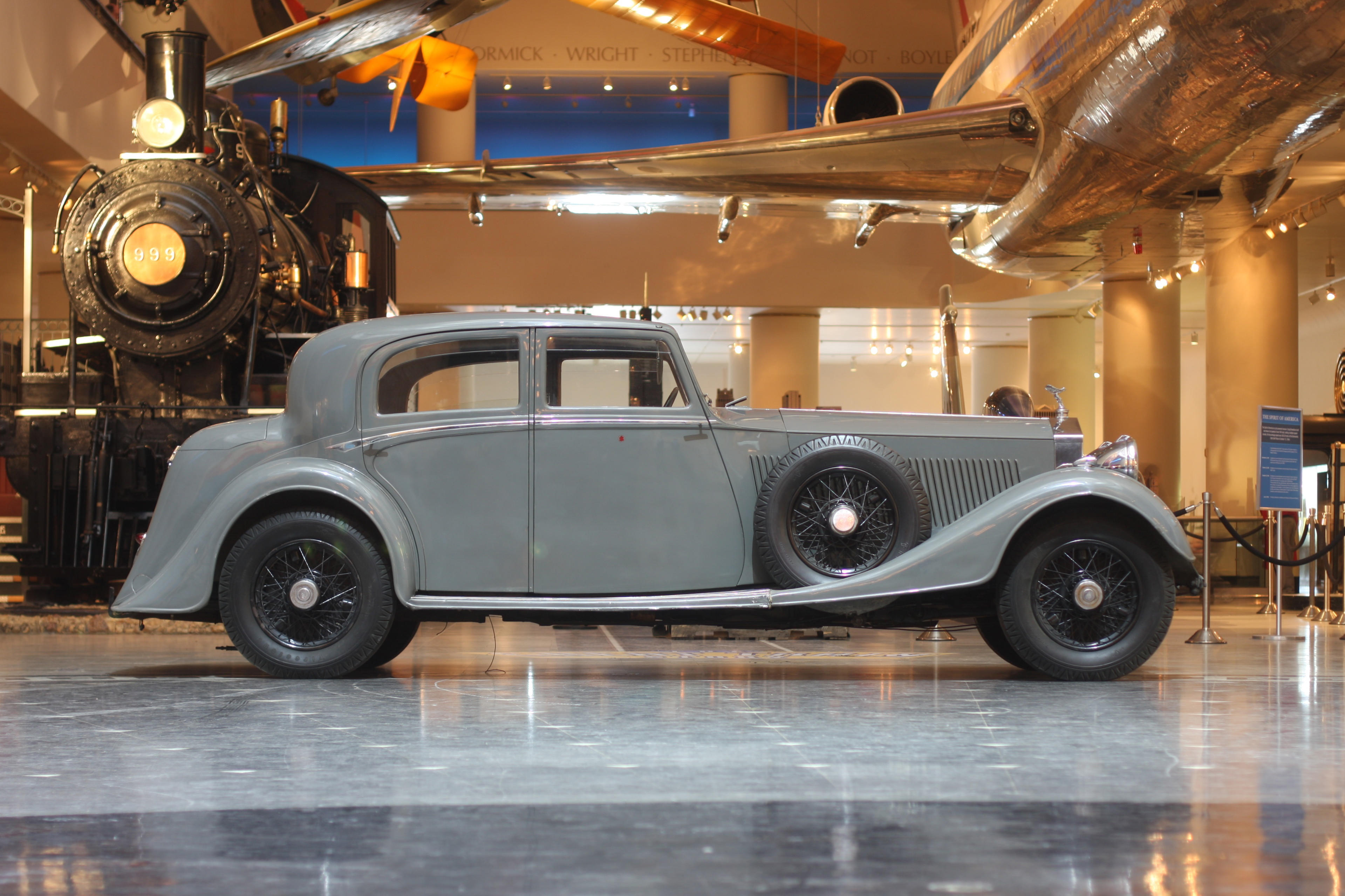


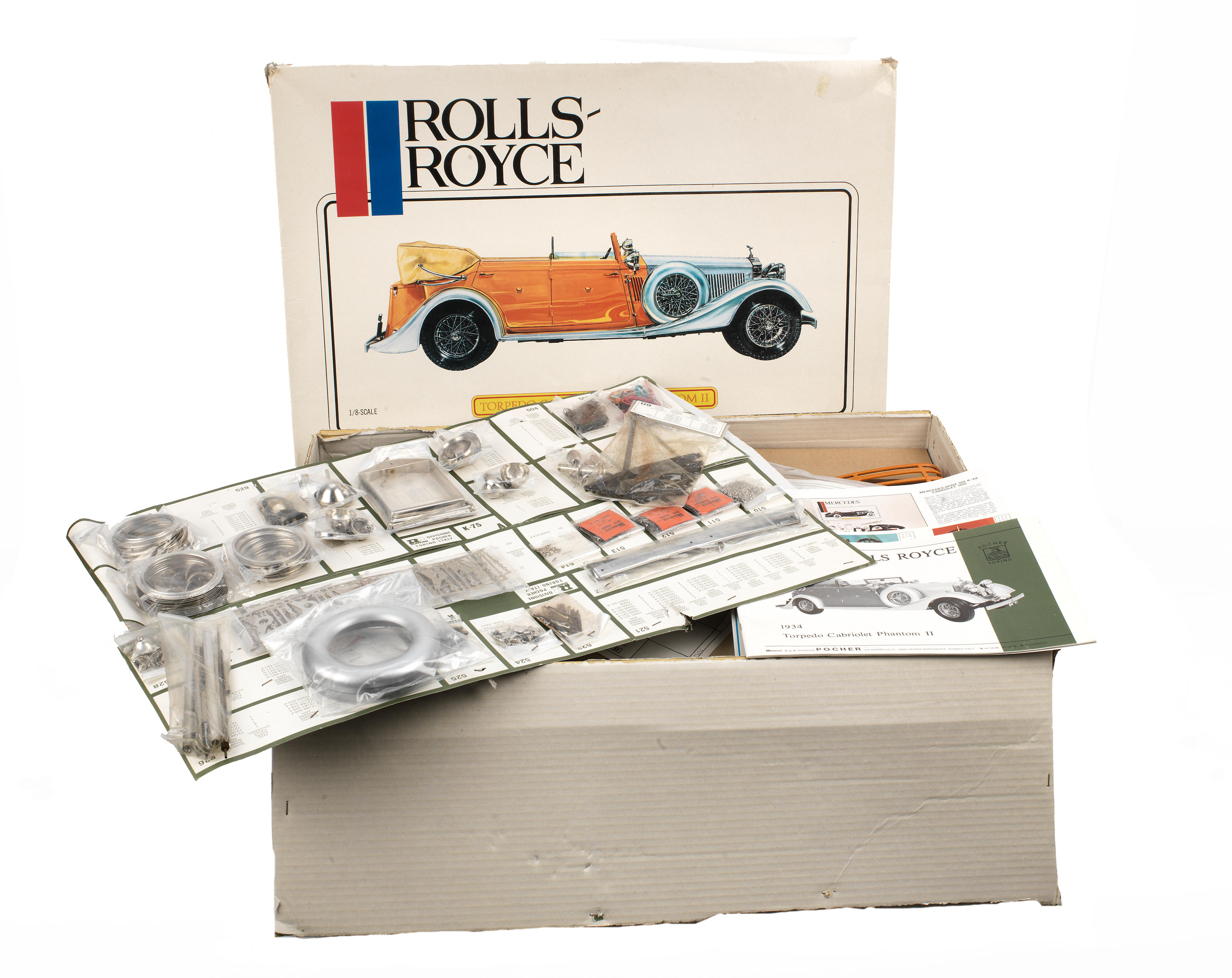
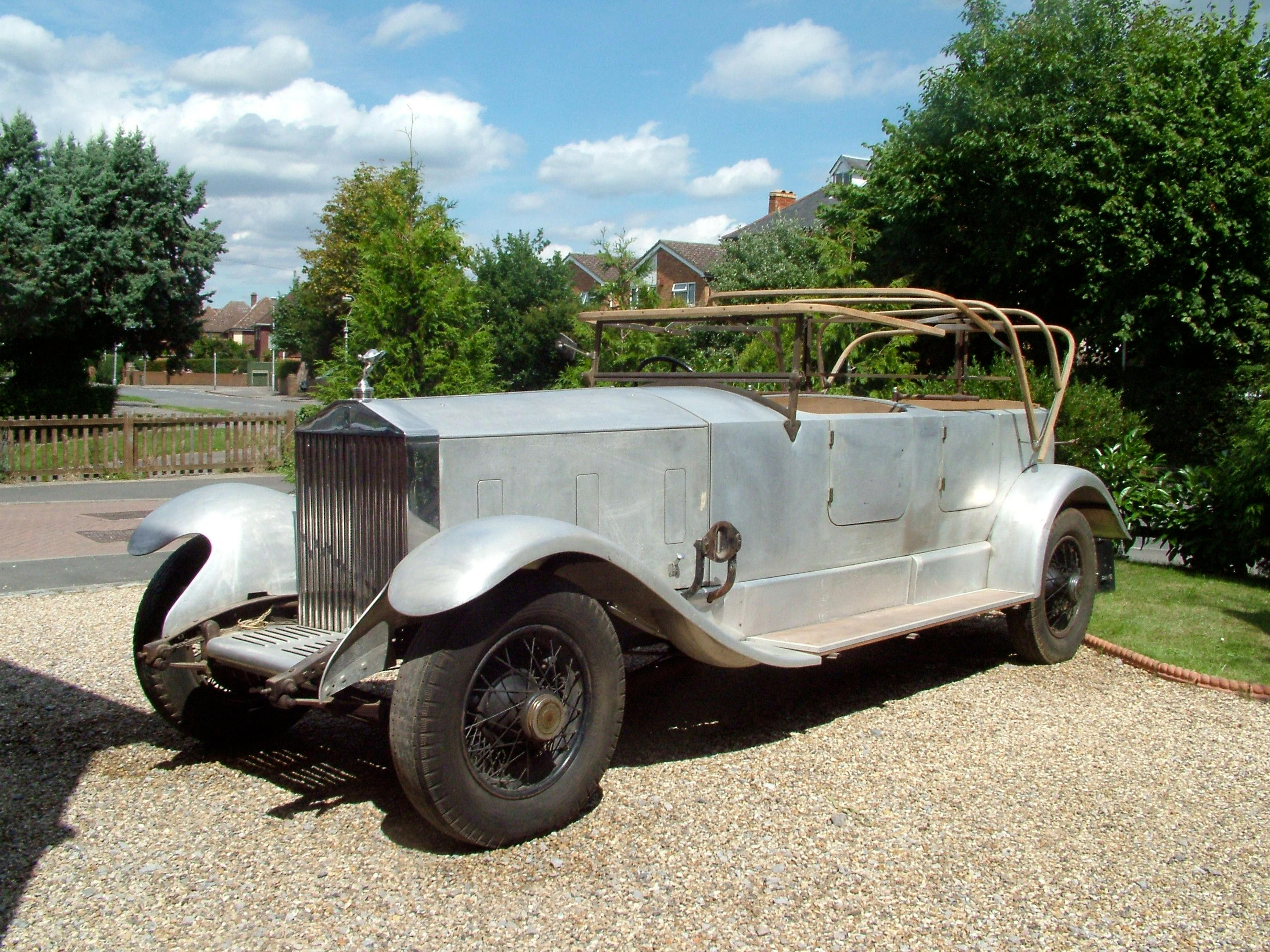
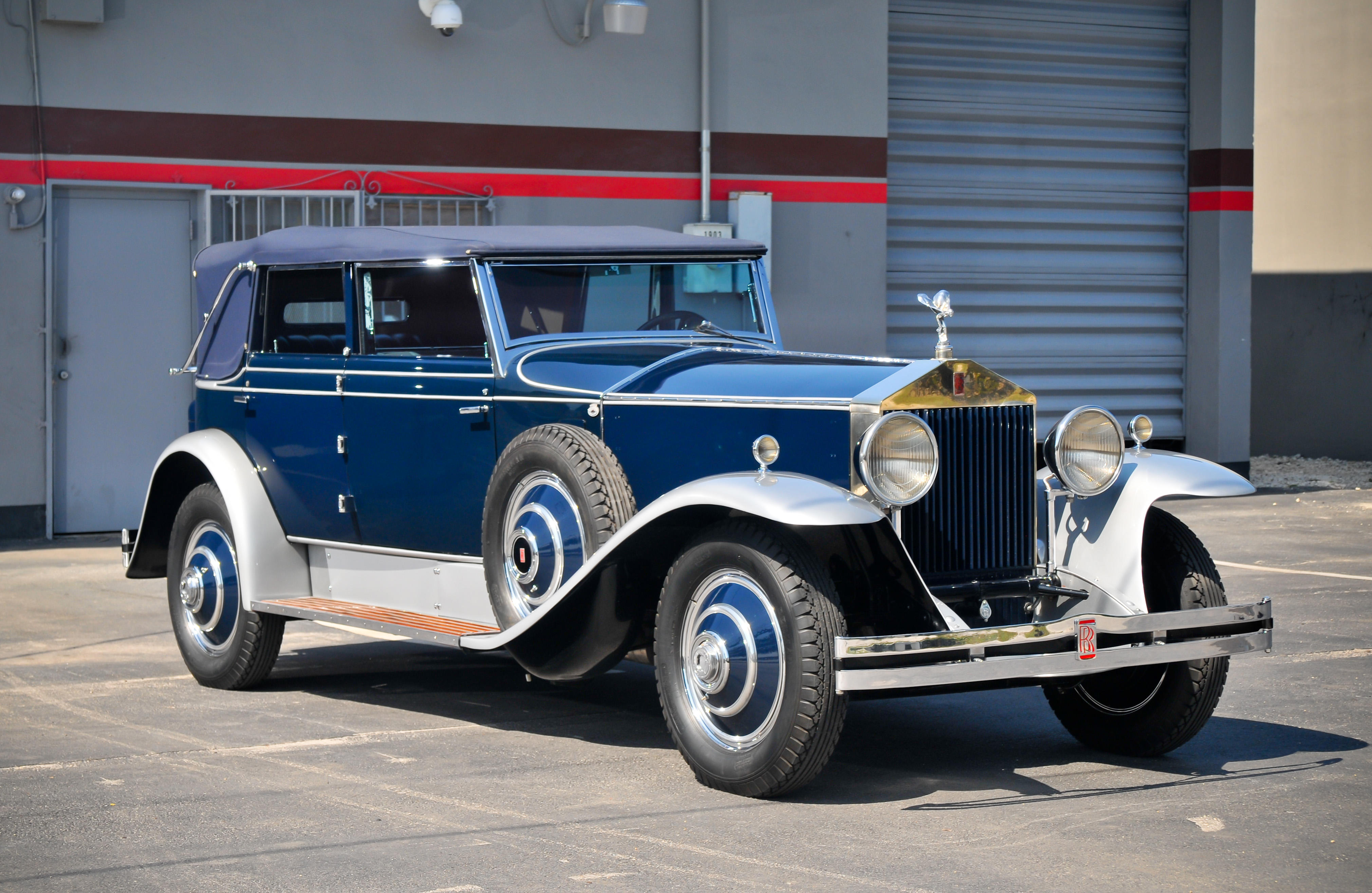
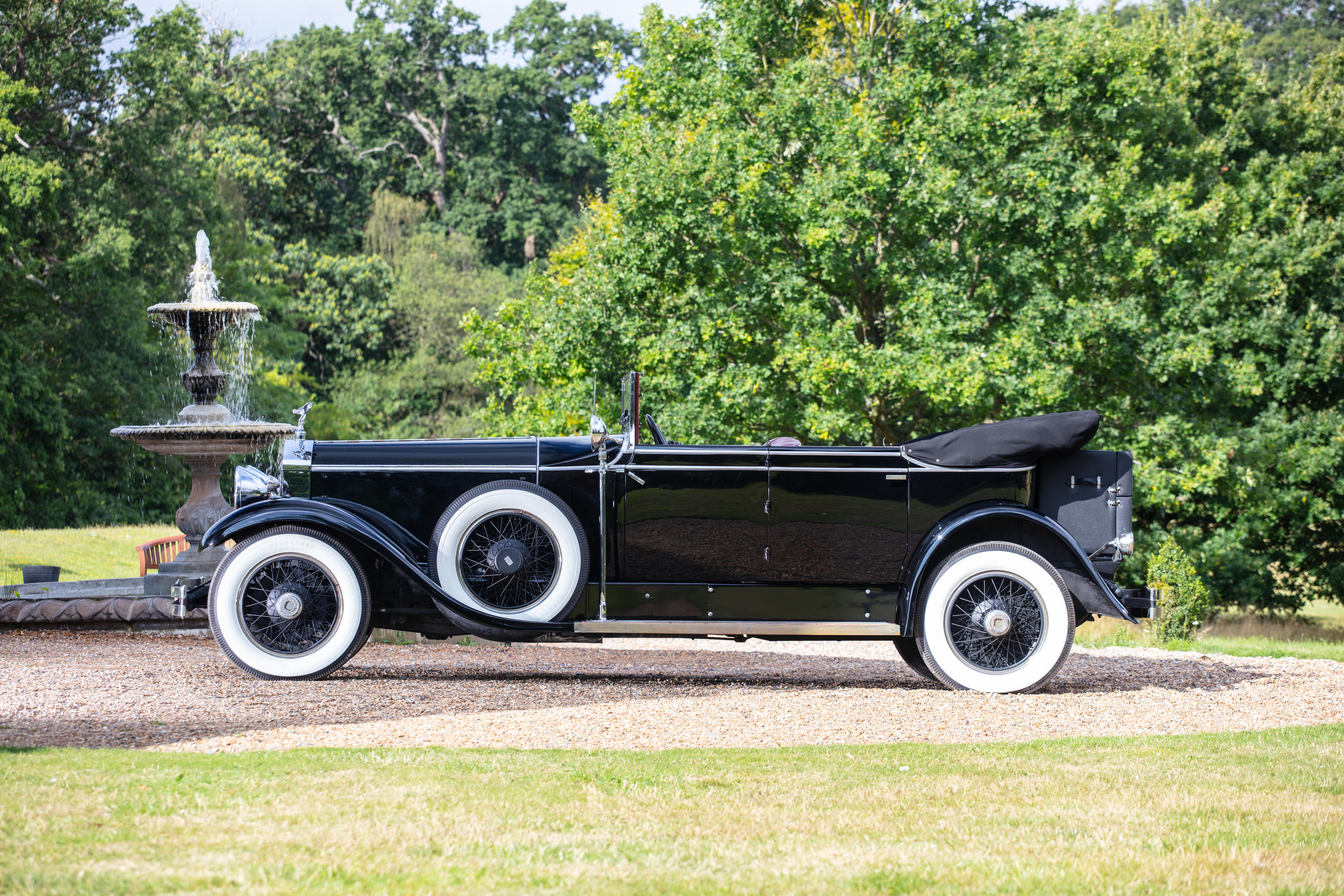
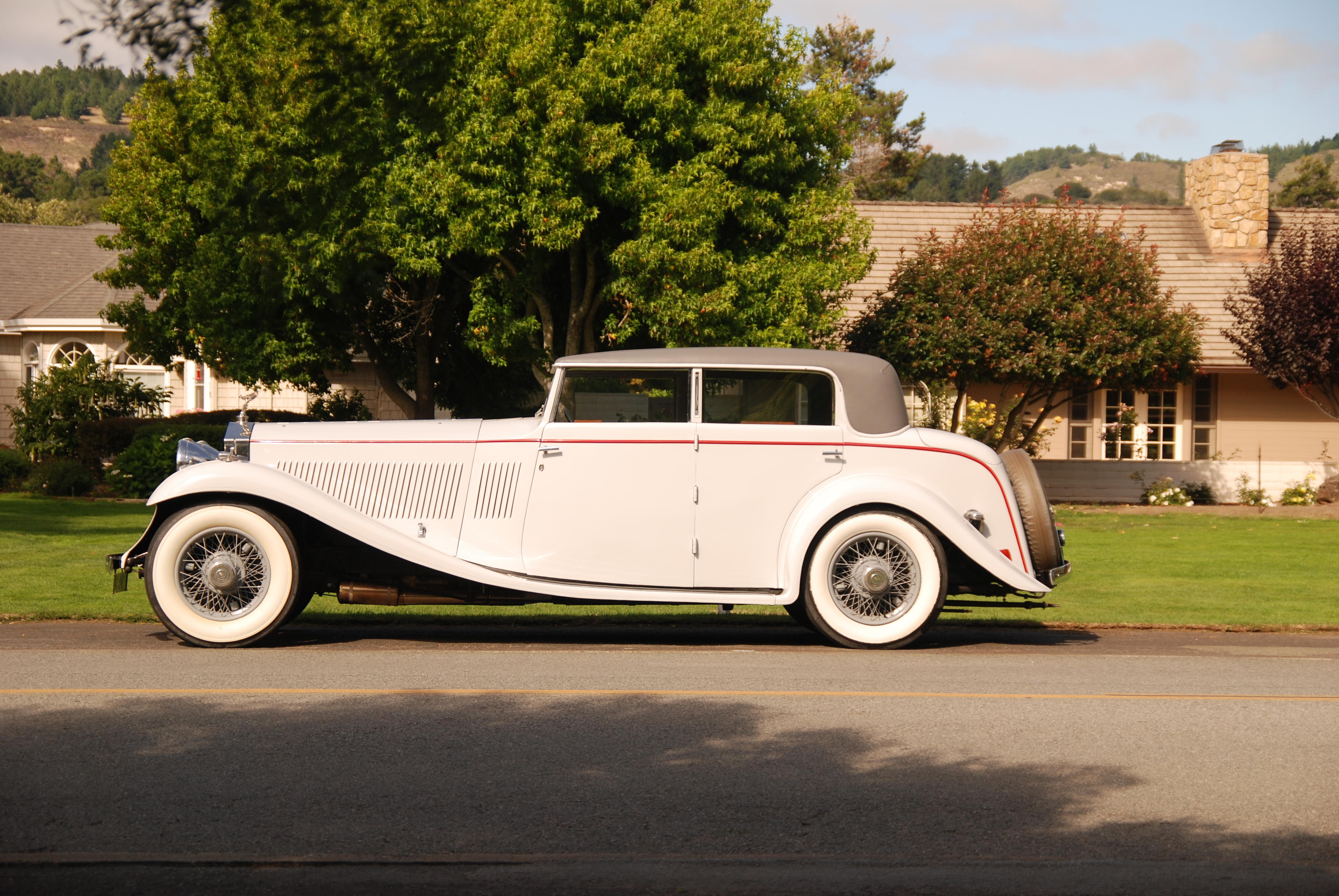

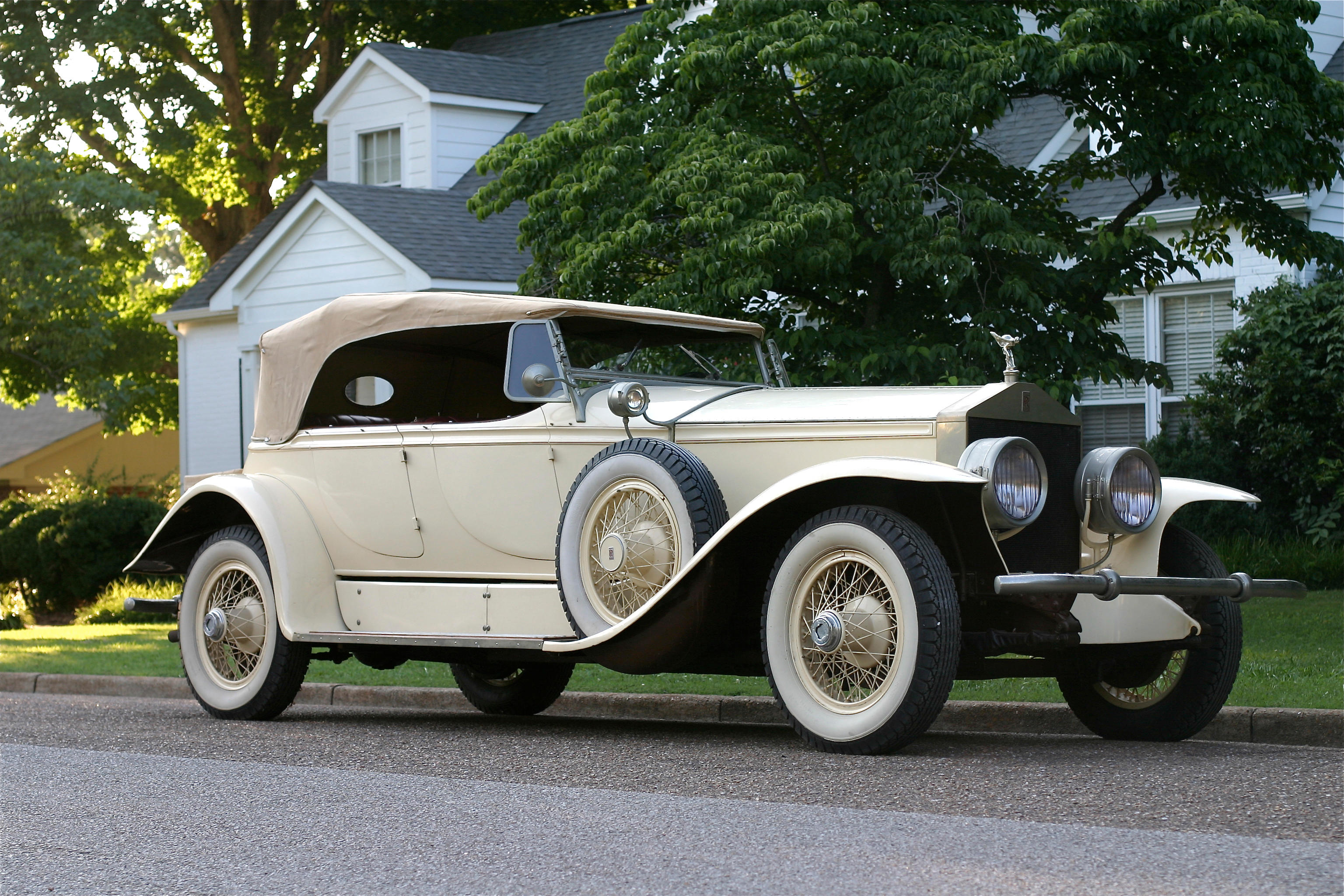
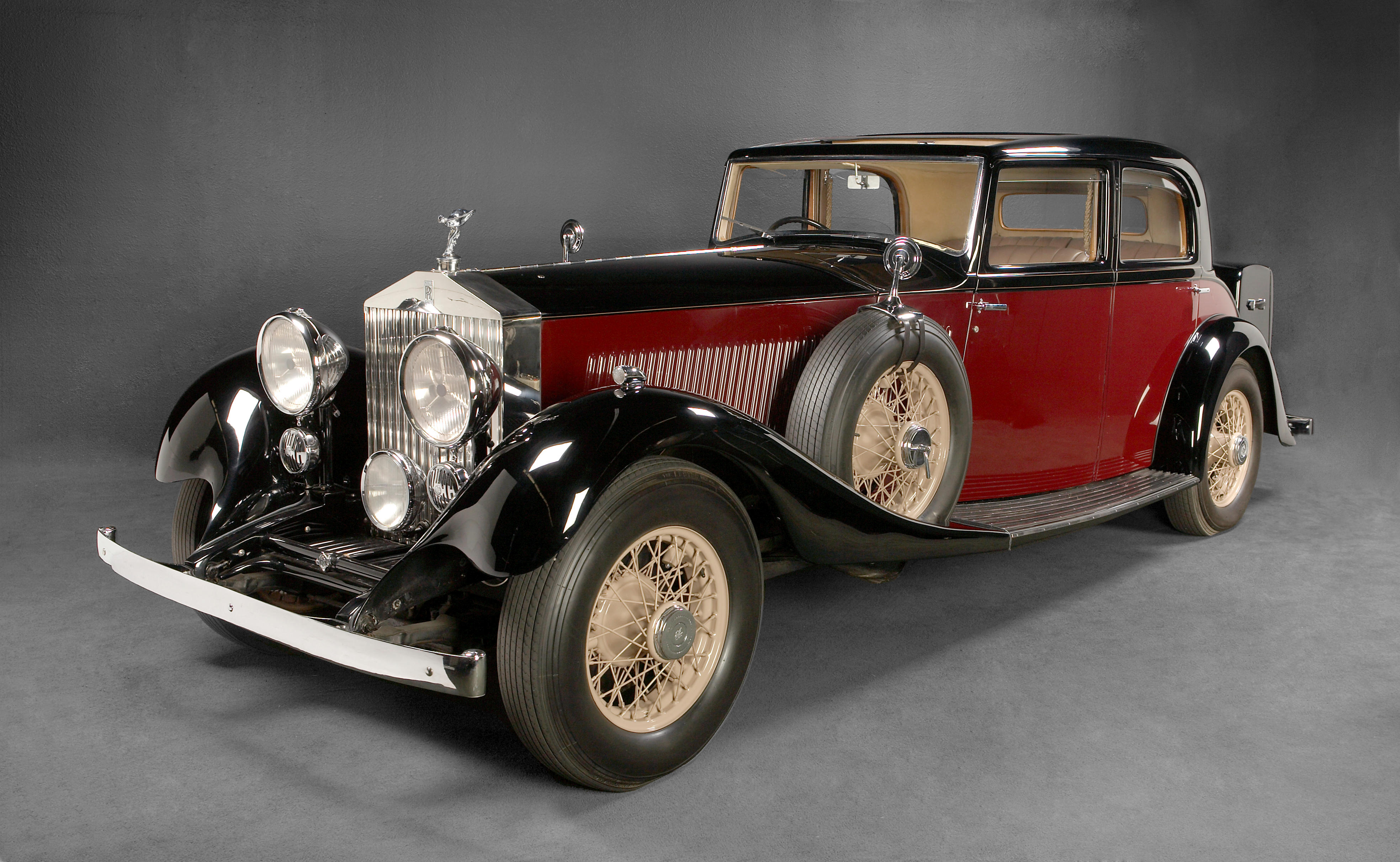
Testen Sie LotSearch und seine Premium-Features 7 Tage - ohne Kosten!
Lassen Sie sich automatisch über neue Objekte in kommenden Auktionen benachrichtigen.
Suchauftrag anlegen